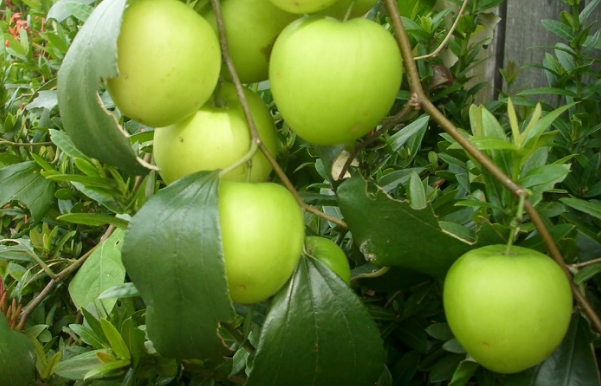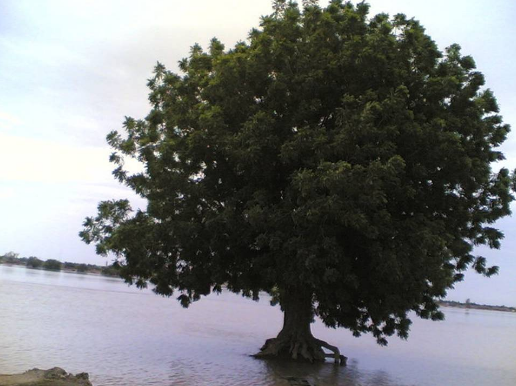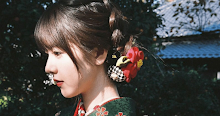What is Bidara Fruit - Bidara or jujube (Ziziphus mauritiana) is a small tree that produces fruit that grows in dry areas. This plant is also known by various regional names such as jujube (Sd., Jw.) Or shortened to virgin (Jw.); bukol (Md.); bĕkul (Bal.); ko (Sawu); how come (Rote); kom, kon (Timor); bara (Alor); bidara (Mak., Bug.); rangga (Bima); as well as kalangga (Sumba).
What is Bidara Fruit?
The names in other countries include: bidara (Indonesia), jujube, epal siam (Mal.); phutsaa, ma tan (Thai); putrea (Cambodia); than (Laos); manzanitas (Fil.) zee-pen (Burma); tao, tao nhuc (Vietnam). In English known as Jujube, Indian plum, Jujube Indian, or Chinese Apple; and Jujubier in French.
A guide to find out what is a bidara fruit
Shrubs or small trees, usually bent, up to 15 m high and rocking the stem up to 40 cm. The branches spread and often dangled, with twigs growing confusing and short-haired. Always green or semi-aborted leaves.
The supporting leaves are spines, alone and straight (5-7 mm), or in dimorphic pairs, where the latter are shorter and curved, sometimes without thorns.
Single leaves lie interspersed. Round egg leaflets push or oblong oval, 2-9 cm x 1.5-5 cm; flat-edge or slightly raised; bald and shiny on the upper side, and tight-haired whitish felts on the underside; with three main leaf bones that look clearly parallel to each other; short stem 8-15 mm.
Umbrella-shaped inflorescence grows on the axillary leaves, 1-2 cm long, containing 7-20 florets. The flowers are small, with a diameter between 2-3 mm, yellowish, slightly fragrant, with 3-8 mm stem; petals with a 5-shape delta (triangular), haired on the outside and bald on the inside; crown 5, rather like a spatula, concave and curved.
Stone fruits are round to ovate, up to 6 cm × 4 cm in cultivars cultivated, but most are much smaller in the trees that travel; smooth or rough, shiny, thin but clayy, yellowish, reddish to blackish if cooked; the flesh is white, flaky, with a lot of fruit juice that is slightly sour until sweet it tastes, becomes tinged on the fruit that is fully ripe. The seeds are protected in shells that are hollow and irregularly grooved, containing 1-2 cores that are brown in the shape of a funnel.
Usability of Bidara fruit
The fruit of superior cultivars is traded as fresh fruit, to be eaten directly or made as a fresh drink. In some places, this fruit is also dried, made into sweets, or set up. Young fruits are eaten with salt or reconciled. The fruit from the tree that runs small and is rather bitter. Bidara fruit is a source of carotene, vitamins A and C, and fat.
The young leaves can be used as vegetables. The leaves are old for animal feed. Decoction of the leaves is taken as herbal medicine. These leaves are foaming like soap when squeezed with water, and are used to bathe people who have a fever. In Jakarta, bidara leaves are used to bathe corpses.
In addition to leaves, fruit, seeds, bark, and roots, it is also medicinal, to help with digestion and as a wound poultice. In Java, this bark is used to treat digestive disorders; and in Malaysia, smoothed bark is used as a medicine for stomach aches. Bidara bark is believed to have properties as a tonic, although not too strong, and is recommended for stomach and intestinal diseases. Root skin, mixed with a little shoots, pulasari, and garlic, is taken to treat painful and bleeding urine.
The wood is reddish, smooth, hard and durable. This wood is used as goods for lathe, household appliances, and other equipment. In Bali, bidara wood is used for ax handles, knives, chisels and other carpenter tools. The density of bidara wood ranged from 0.54 to 1.08. Wood terraces that vary in brownish yellow, pale red or brown to dark brown, are not very clearly distinguished from sapwood. This wood can be dried well, but sometimes it breaks a little. In addition to the above usage, bidara wood is also suitable for construction, furniture and cabinets, packing boxes, veneers and plywood.
Bidara produces good quality firewood; the calorific value of the sapwood is 4,900 kcal / kg. This wood is also good as charcoal. The dangling branches are easily trimmed and harvested as firewood.
Bark and bidara fruit also produce coloring materials. These ingredients produce tannins and reddish-brown or gray-brown coloring in water. In India, bidara trees are also used in the maintenance of lice; the branches that are wrapped in lice's dirt are harvested to produce shellac.
Ecology and distribution of Bidara fruit
This plant mainly grows well in areas that have a clear dry season. The quality of the fruit is best if it grows in a hot, sunny environment, and is quite dry; but it should experience an adequate rainy season to grow twigs, leaves and flowers, and to maintain soil moisture during fruit ripening. Bidara grows widely in areas with rainfall of 300-500 mm per year. For commercial purposes, bidara trees can be developed to an altitude of 1,000 m above sea level; but above this height the growth is not good.
Resistant to dry climate and flooding, bidara is easy to adapt and often grows on land that is poorly managed and on the roadside. It grows in various types of soil: laterite, black soil that is well drained, sandy soil, clay, alluvial soil along the river (riparian).
Bidara is thought to have origins from Central Asia, and spread naturally in large areas ranging from Algeria, Tunisia, Libya, Egypt, Uganda and Kenya in Africa; Afghanistan, Pakistan, northern India, Nepal, Bangladesh, southern China, Vietnam, Thailand, the Malay Peninsula, Indonesia, to Australia. Now the bidara has been planted in many countries in Africa, and also in Madagascar. But the only thing that develops commercially is India, China, and a little in Thailand.
A similar type of Bidara fruit
Bidara often exchanged his identity with Chinese bidara (Ziziphus zizyphus; synonym Z. jujuba Miller, Z. vulgaris Lamk.). The latter is cultivated in northern China.
Ziziphus spina-christi, otherwise known as Christ's Thorn Jujube ("Christ's thorn crown"), grows in the regions of north and tropical Africa and West Asia, including in Israel / Palestine. It is believed to be the ingredient to make the crown of thorns placed on the head of Jesus Christ before His crucifixion.
The position of Bidara fruit in Islam
Bidara or Sidr (English: Lote tree) has a position in Islam. This tree is mentioned in several suras in the Qur'an, namely:
- As a small number of bidara trees (sidrin qolil) (QS.34. Saba ': 16),
- As a tree of prickly heretics (sidr makhdud) (QS. 56. Al-Waqiah: 28),
- As the final border bidara tree (sidratul muntaha) and the Bidara Tree which is covered (sidrata ma yaghsya) (QS.53. An-Najm: 13-16)
This tree, besides being mentioned in the Qur'an, is also recommended for use in the hadith. He is used in a variety of worship processions, for example the leaves are used for use when compulsory bathing for women who are just holy rather than menstruating. Also when bathing bodies and removing unclean bodies, bodies are advised to be bathed with water mixed with bidara leaves. Bidara leaves are also sometimes used in the Ruqyah process to treat people who are possessed.
source from wikipedia

















0 comments: